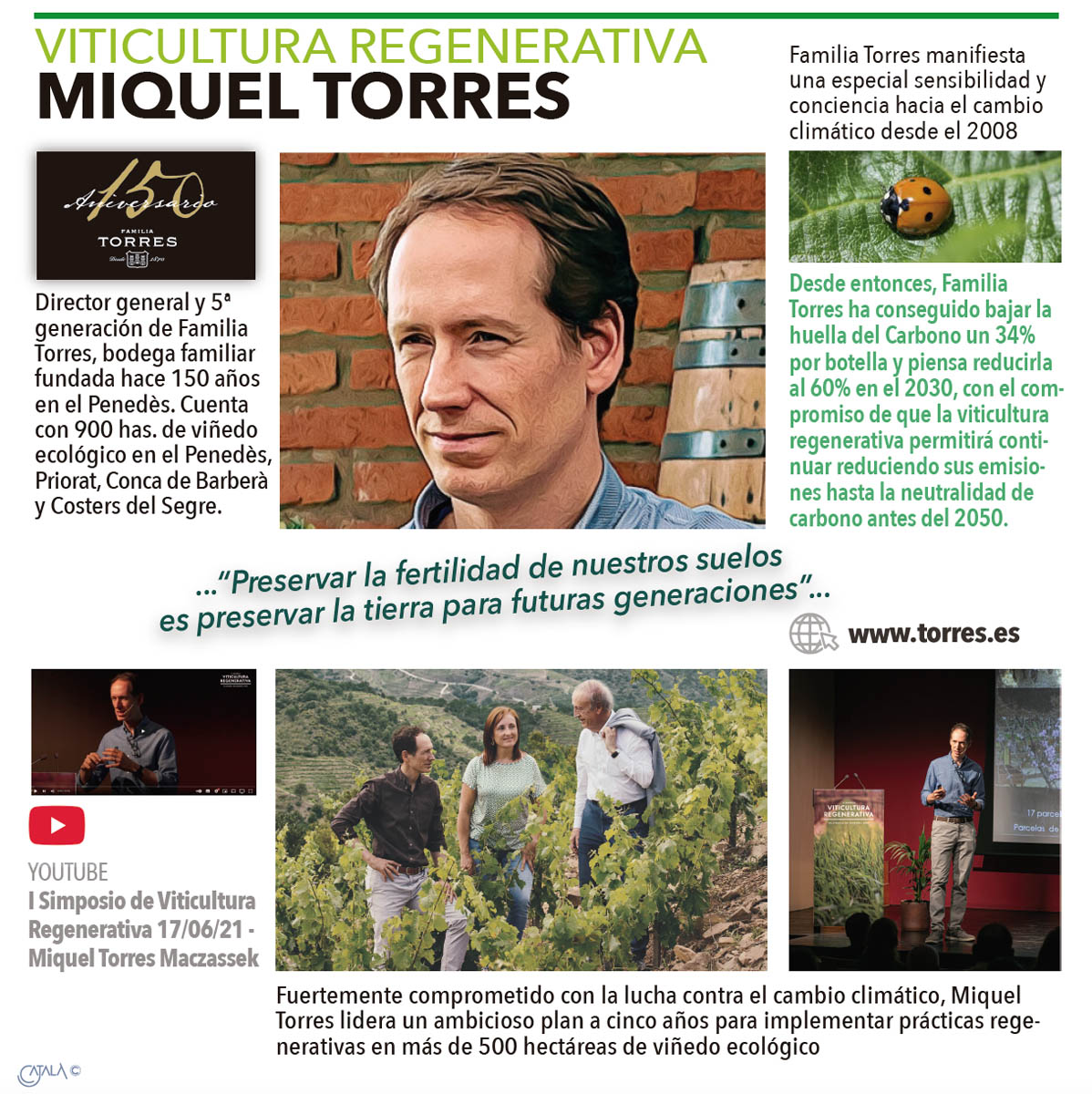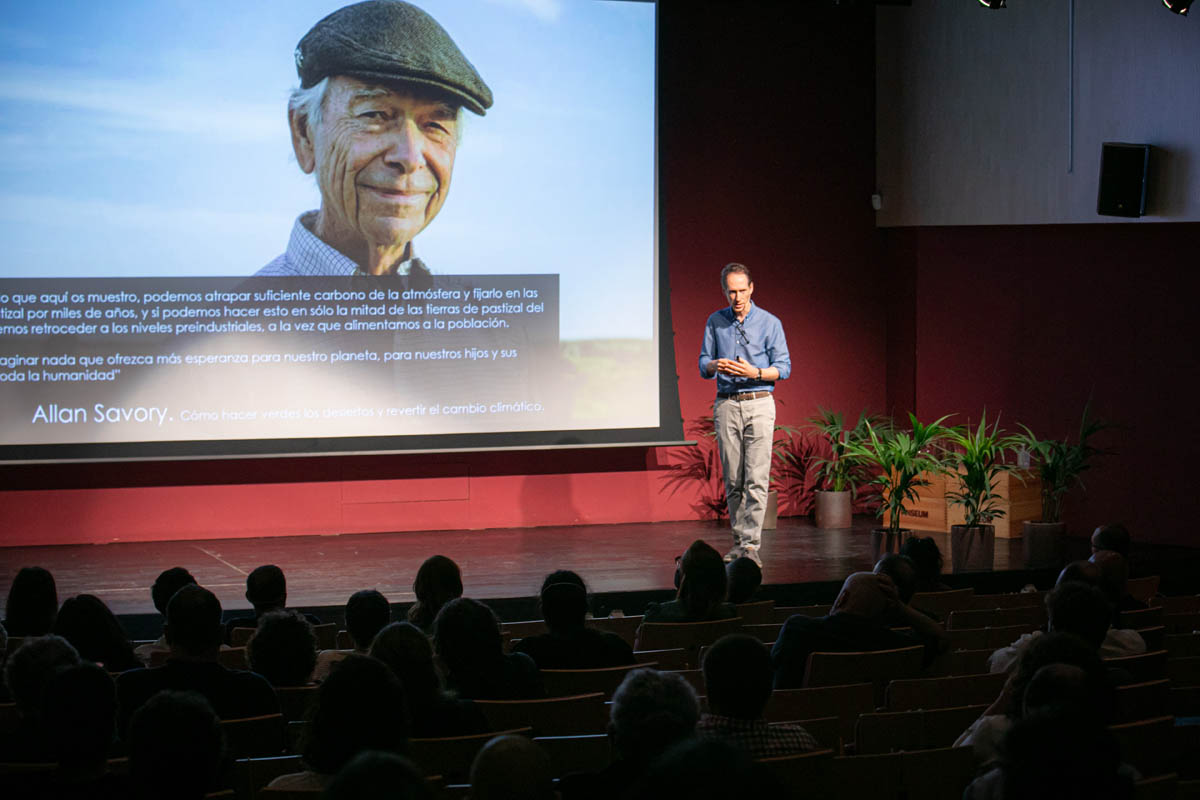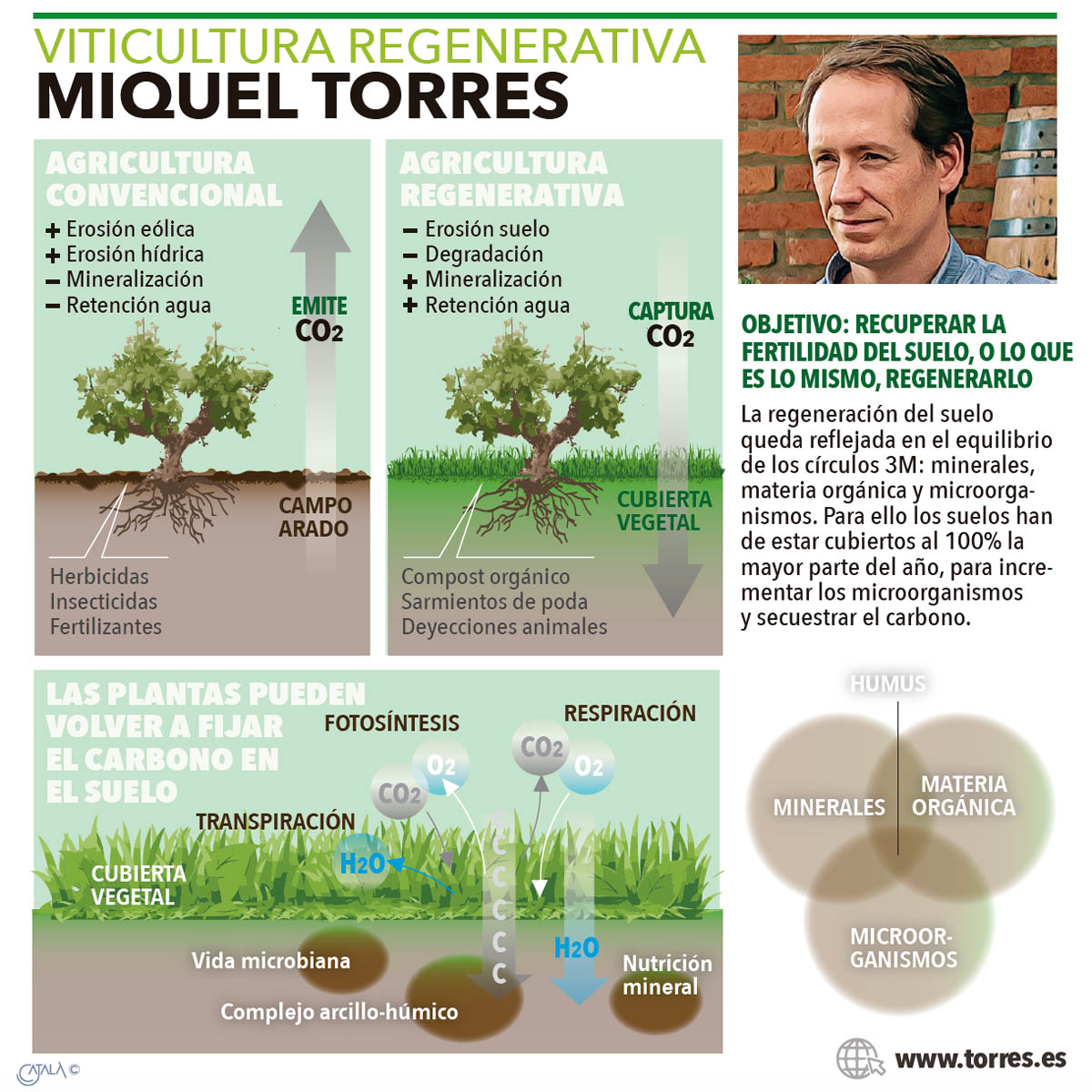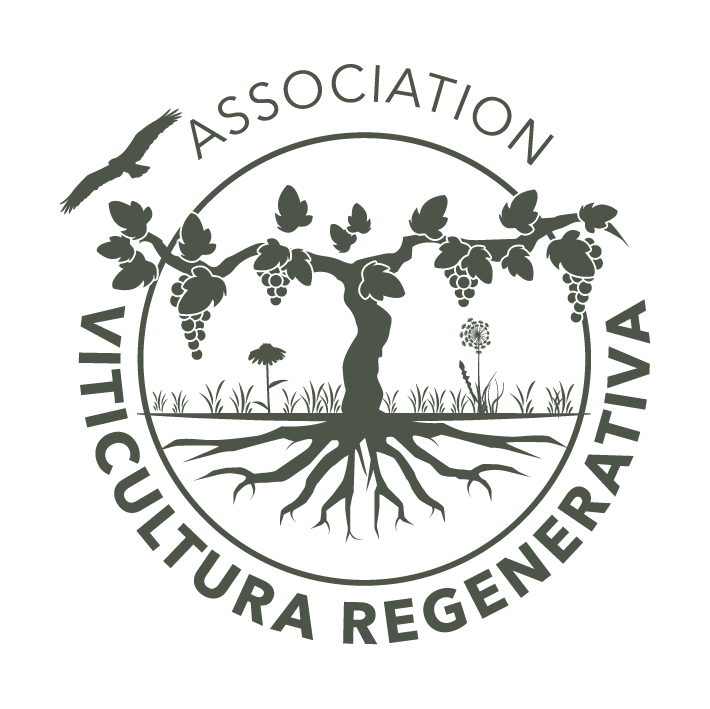Miguel Torres: “Protecting the fertility of our soils means protecting the earth for future generations”
Miguel Torres Maczassek, fifth generation Familia Torres, participated in the 1st Regenerative Viticulture Conference held in Vilafranca del Penedès this past June. Below you'll find a summary of his talk “Regenerative viticulture and climate change”.

“We have been practicing organic viticulture for years,” Miguel Torres said, “Because we care about the earth, and as a family winery, we want to make sure to leave everything in good shape for the next generation.” The turning point for Familia Torres came in 2008 when the reality of climate change began to sink in. Something was happening in the vineyards: rising temperatures, drought, grapes ripening earlier than usual, a loss in acidity, etc. So they took action.
Familia Torres launched an ambitious plan to adapt to climate change and reduce emissions, both the winery’s own and those of its suppliers. This included projects to generate renewable energy, improve energy efficiency, optimize water resources and create reservoirs to survive extreme drought, plant trees “because we know this is a way of capturing and storing atmospheric carbon”, and even re-use the CO2 released during wine fermentation. In doing so, the winery had managed to reduce its carbon footprint 34% by 2020 compared to 2008.
But when Miguel observed the vineyards, he had this feeling that even though they were organic, something wasn't right, there was room for improvement. The soils showed clear signs of erosion. And then Allan Savory opened his eyes. This marked the beginning of Familia Torres's journey to regenerative farming. “We only know of one way to sequester carbon from the atmosphere and that is through plants, which can return and store this carbon in the soil.” This is why Familia Torres set its sights on restoring soil fertility.

First Miguel Torres and his team had to understand the soils – they had to analyze them and then get started. They set out to transform 500 hectares of organic vineyards within five years, including their flagship vineyards of Mas La Plana in Penedès and Mas de la Rosa in Priorat. Miguel admits that this requires a lot of time, and changes happen gradually, but one does perceive quite quickly how nature begins to take over, how the vineyards are greener, with spontaneous plant cover. Even at a glance, they seem more alive.
Soil regeneration is reflected in the balance between the 3M circles: minerals, organic matter, and microorganisms. This means that for most of the year, the soils have to be covered 100% to increase the presence of microorganisms and sequester carbon. Miguel Torres also touched on other aspects related to this new viticultural model, such as the use of animals in the process, the adaptation of farming machinery – during the early stages – and holistic management to increase biodiversity. The latter includes wildlife corridors, insect hotels, vegetable gardens, bee hives, etc. All the while keeping in mind how all of this interacts with the fauna that lives around the vineyards.
However, according to Miguel, people are the most important component of all. This led to the creation of a cross-cutting team to share knowledge and learn from each other. After all, the decision to embrace regenerative viticulture must come from a place of personal conviction, not imposed from the outside.
Holistically managed regenerative viticulture captures CO2, reduces erosion, decreases degradation, reduces temperatures, and increases the water holding capacity of the soil. This last aspect does carry some risk in terms of frost or if time and cover crops are not managed well. Soil fertility finds reflection in the wine, and this makes it possible to produce more elegant wines in drought years. There is no perfect handbook for regenerative viticulture; it is about experimenting, and a viticultural model where the carbon cycle and carbon storage are fundamental might take some time to show results.

Miguel Torres ended on a number: “There are 7,400,000 hectares of vineyards in the world, and I would like all of us to take a moment and imagine what would happen if all of them practiced regenerative viticulture, and a large amount of carbon was returned to the soils?” He closed his talk by saying, “We are a family winery, and we have a treasure called the earth. Protecting the fertility of our soils means protecting the earth for future generations.”
